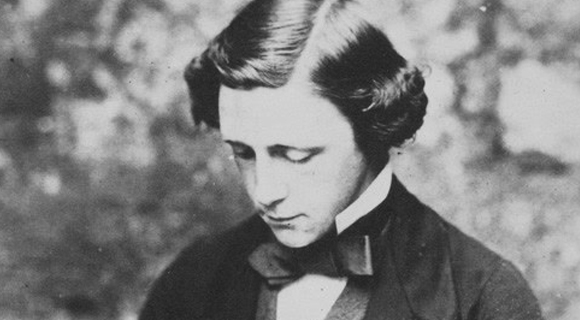The 124th anniversary of the death of Lewis Carroll, the author of “Alice in Wonderland” and an enthusiastic recreational mathematician and logic puzzler
“Through the Looking-Glass, and What Alice Found There”, Lewis Carroll
Lewis Carroll. Mathematician, university lecturer, and author of “Alice in Wonderland”, “Through the Looking-Glass, and What Alice Found There” and “The Hunting of the Snark”, whose literary genius keeps fascinating billions of people around the world, has died 124 years ago today.
Carroll’s real name was Charles Lutwidge Dodgson. Born in 1832 in the small English town of Daresbury, Dodgson lived as a bachelor in the university town of Oxford. Though he studied and taught mathematics at the prestigious Oxford University, he did not gain his fame for that. His precise sense of humor, his creativity and well-developed imagination, combined with rare logical thinking, were what led him to be crowned as one of the greatest authors of all time.
On July 4th 1862 Dodgson took three of the daughters of Henry Liddell (ecclesiastical dean of Christ Church College in Oxford), Lorena, Alice and Edith, on a boat trip through Oxford. As legend has it, during the trip, Dodgson entertained the children with a whimsical fantasy story about “Alice In Wonderland”, which he had made up while they sailed, a story that would later be published under one of his chosen pen names, ‘Lewis Carroll’.
Carroll’s book, alongside other works by him, which included games, riddles, puzzles, scribbles, photographs and gadgets, found their way to the Victorian salons and tea parties of the time. The 19th century and the games of chess and cards, common at the time, provided a perfect setting for Carroll’s classical books.

Mathematician, lecturer and literary genius. A photo of Dodgson, i.e. Carroll ca. 1856 | Source: Wikipedia, common knowledge
Sleepless Riddles
Dodgson suffered from insomnia, and one of his methods for dealing with the difficulty of falling asleep was to solve mathematical problems, which he would invent while lying in bed. Carroll published 72 of these problems in his booklet “Pillow Problems”. He testified that thinking of these problems helped him banish his night terrors and fight the intrusive thoughts that bothered him while trying to fall asleep.
Another invention by Carroll, presented as an amusement for the magic-loving crowds of the time, was a method for calculating the day of the week for any specific date.
One of the main subjects Carroll dealt with was mathematical logic, as attested by the opening quote of this article, and indeed, “Alice” books are filled with clever and ingenious statements. Carroll also developed a methodical board game, which he named The Game of Logic and which later became a reference book for students that aimed to teach them the fundamentals of logic by teaching them to draw logical conclusions from sets of sentences.
Carroll died in 1898, but his legacy is studied, written and preserved to this day by initiatives such as The Lewis Carroll Society and the series of publications of his numerous scattered articles, which were recently collected together and published under the title “The Complete Pamphlets of Lewis Carroll”.

A bounty of wisdom and witticism. The first handwritten page of the original manuscript of “Alice in Wonderland” | Source: Wikipedia, common knowledge
A Puzzle and a Game
Here is one of the Pillow-Problems published by Carroll.
“The governor of Kgovjni wants to give a very small dinner party, and invites his father’s brother-in-law, his brother’s father-in-law, his father-in-law’s brother, and his brother-in-law’s father. Find the least number of guests''.
Note: a father-in-law is the father of one’s spouse, a brother-in-law can be a sister's husband or a wife’s brother.
The following puzzle game was invented by Carroll and is called Doublets (also known as Word-Ladders). The purpose of the game is to transform a given word A into another given word B in a given number of steps. At each step you can only replace a single letter and the result must be a genuine word.
The rules of the game are the following:
- Only one letter is replaced at each step
- Subtraction or addition of letters is forbidden (the number of letters in the word remains the same)
- All of the words are genuine English words
- The initial word and the final word are included in the count of the number of steps
In the following example the goal is to get from HEAD to TAIL in six steps:
HEAD
- heal (results from changing the "d" of "head" to "l")
- teal (results from changing the "h" of "heal" to "t")
- tell (results from changing the "a" of "teal" to "l")
- tall (results from changing the "e" of "tell" to "a")
TAIL (Results from changing the first "l" of "tall" to "i")
Here are some more doublet challenges -
- Turn SLEEP into DREAM using the least number of steps
- Turn COLD into WARM using the least number of steps
- Turn BLACK into WHITE using the least number of steps
- Turn FLOUR into BREAD using the least number of steps
- Turn IRON into LEAD using the least number of steps
